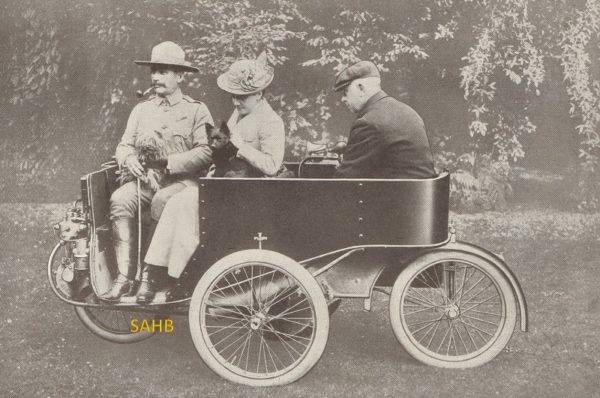
Even Sunbeam, in its 25th anniversary publication “The History and Development of the Sunbeam Car: 1899-1924” could not avoid the words “The Sunbeam-Mabley, with its curious design…”
And curious it was, with four wheels in diamond formation, two passengers facing the roadside and the driver, with tiller steering, facing the other way behind them.
Tinplate manufacturer and enthusiastic cyclist John Marston established his cycle factory in the late 1890s in Paul Street Wolverhampton and registered the name Sunbeam for his products. Very soon Marston considered the production of motor cars. Together with his right-hand man Thomas Cureton, and despite resistance from the board of directors, Marston developed a number of experimental cars between 1899 and 1901 – but none were sold to the public.
The first car branded Sunbeam was not even designed by Marston or Cureton. It was created and developed by a young architect, Maxwell Mabberly-Smith (sometimes spelled Maberly), and powered by a single-cylinder 2¾ horsepower De Dion engine that can just be seen at the front of the car in our Snapshot, with belt drive to the central two-wheel axle. Both the front and rear wheels were steered.
It was described as a “sociable” and was designed in the form of an S-shaped mid-Victorian sofa. As our picture shows, this did not appear be a very comfortable arrangement: the lady had to sit at an angle. The dog seemed to be quite relaxed, however.
One Sunbeam-Mabley was entered for “The 100 Miles Liverpool Reliability Competition, including a hill-climbing trial,” and was awarded the highest available honour, a Gold Medal. Mabberley-Smith was paid a royalty on each car for his design. Sunbeam’s Managing Director in 1925, W. M. Iliff, stated, “I think that it is probable that he did better out of the job than we did.”
The Sunbeam-Mabley was a limited success, with not much more than a hundred sold in 1901 and 1902 at £130. More stock was still in the Sunbeam catalogue in early 1904. But the curious Sunbeam-Mabley did help to promote the name of Sunbeam as a car manufacturer, and several customers went on to buy more powerful and more conventional Sunbeams in the years that followed. Although only four of these eccentric vehicles are thought to survive, at least one can still be seen each year negotiating the London to Brighton run with great reliability.







Leave a Comment